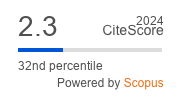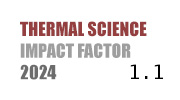THERMAL SCIENCE
International Scientific Journal
Authors of this Paper
External Links
UNIQUENESS OF THE SOLUTION FOR THE CONJUGATION PROBLEM OF THIRD-ORDER PARTIAL DIFFERENTIAL EQUATIONS AND ITS APPLICATION IN NEURAL NETWORK REGULARIZATION
ABSTRACT
This article investigates the uniqueness of the solution for the conjugation problem of third-order PDE with a characteristic line and its application in neural network regularization. A theorem on the uniqueness of the solution for the considered class of equations is proven. Based on the obtained theoretical results, a novel neural network regularization method is developed that accounts for the physical constraints of the problem. A comparison is made between the classical finite difference method and an innovative approach based on physics-informed neural networks. Numerical experiments demonstrated that the proposed method provides higher accuracy and better adherence to the physical constraints of the problem. The regularized neural networks exhibited lower mean square error, better compliance with conjugation conditions, and higher resilience to input data variations compared to classical methods and standard neural networks. The research opens new perspectives for integrating classical mathematical methods with modern machine learning technologies.
KEYWORDS
PDE, conjugation problem, uniqueness of solution, neural networks, regularization, physics-informed neural networks, numerical methods
PAPER SUBMITTED: 2024-07-11
PAPER REVISED: 2024-10-20
PAPER ACCEPTED: 2024-11-20
PUBLISHED ONLINE: 2025-02-22
DOI REFERENCE: https://doi.org/10.2298/TSCI2501371A
CITATION EXPORT: view in browser or download as text file
2025 Society of Thermal Engineers of Serbia. Published by the Vinča Institute of Nuclear Sciences, National Institute of the Republic of Serbia, Belgrade, Serbia. This article is an open access article distributed under the terms and conditions of the Creative Commons Attribution-NonCommercial-NoDerivs 4.0 International licence

